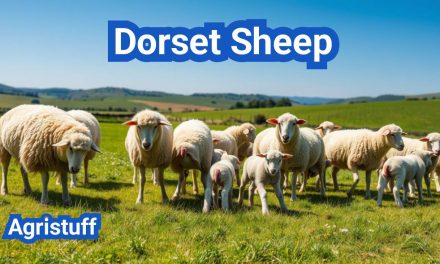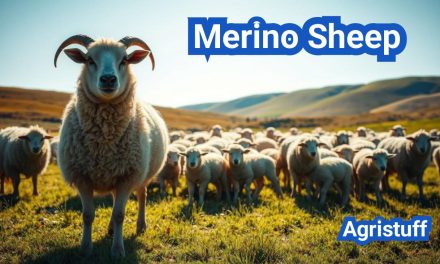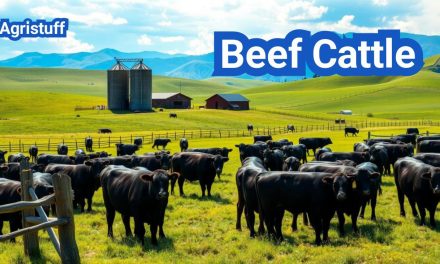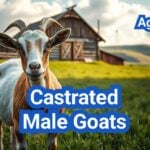The Shetland Sheep is an ancient breed that has thrived on the Shetland Islands for over 1,000 years. Adapted to the harsh environment, this heritage sheep breed has developed unique characteristics that make it an important part of the region’s history and culture.
This Northern European short-tailed sheep breed is known for its hardiness and versatility, making it a valuable resource for farmers and shepherds. With a rich history and distinct characteristics, the Shetland Sheep is an important breed that continues to be used in various ways today.
Key Takeaways
- Originated on the Shetland Islands over 1,000 years ago
- Adapted to harsh environments, making it a hardy breed
- Known for its unique characteristics and versatility
- An important part of the region’s history and culture
- Continues to be used in various ways today
The Heritage of Shetland Sheep
The history of Shetland Sheep is a fascinating tale of adaptation and resilience, set against the backdrop of the Shetland Islands’ rugged landscape. This ancient breed has evolved over centuries, shaped by the harsh environment and the needs of the local community.
Ancient Origins in the Shetland Islands
The Shetland Sheep breed likely descends from ancient Scandinavian sheep brought to the Shetland Islands by early settlers. These sheep were well-adapted to the challenging climate and terrain, characteristics that remain evident in the breed today.
The islands’ isolation allowed the Shetland Sheep to develop distinct traits, separate from other European breeds. Their hardiness and ability to thrive on limited resources made them invaluable to the islanders.
Evolution as a Northern European Short-tailed Breed
Shetland Sheep are part of the Northern European short-tailed sheep family, a group characterized by their short tails and robust constitutions. This classification reflects their shared ancestry with other breeds from the region, such as the Icelandic and Norwegian breeds.
| Characteristics | Northern European Short-tailed Sheep | Shetland Sheep |
|---|---|---|
| Tail Length | Short | Short |
| Climate Adaptability | High | High |
| Hardiness | Very High | Very High |
The Shetland Sheep’s evolution as a distinct breed within this family is a testament to their unique heritage and the selective breeding practices of the Shetland Islanders.
Historical Development of the Shetland Sheep Breed

In 1927, the Shetland Flock Book Society was formed, marking a significant turning point in the breed’s development. This event was crucial in establishing a formal breed standard for the Shetland Sheep.
The 1927 Breed Standard
The adoption of the breed standard in 1927 was a landmark moment in the history of Shetland Sheep. The Shetland Flock Book Society’s efforts to standardize the breed characteristics ensured that the unique features of the Shetland Sheep were preserved. The breed standard addressed various aspects, including size, coat, and color, providing a clear guideline for breeders.
Key elements of the 1927 Breed Standard included:
- Size and body structure
- Coat type and quality
- Color variations and markings
The establishment of this standard helped in maintaining the breed’s integrity and facilitated the recognition of Shetland Sheep in agricultural shows and competitions.
Export and History Outside the Shetland Isles
The Shetland Sheep breed’s export history began relatively early, with the breed being introduced to other parts of the world, including North America. The export of Shetland Sheep contributed to their global distribution and popularity among sheep breeders.
The export history can be summarized as follows:
- Early exports to neighboring islands and mainland Scotland
- Introduction to North America in the late 19th and early 20th centuries
- Global spread through breeders and agricultural shows
As quoted by a renowned breeder, “The Shetland Sheep’s hardiness and versatility made it an attractive choice for breeders worldwide.”
“The Shetland Sheep’s ability to thrive in challenging environments has been a key factor in its global success.”
Agricultural Journal
The Shetland Sheep breed continues to be valued for its unique characteristics and contributions to the world of sheep breeding.
Physical Characteristics of Shetland Sheep
With their small stature and robust build, Shetland Sheep embody hardiness and adaptability, traits that have been crucial to their survival in the harsh Shetland Islands environment. These physical characteristics are a result of centuries of natural selection and careful breeding practices.
Size and Body Structure
Shetland Sheep are characterized by their compact size and fine bone structure. They are one of the smallest sheep breeds, with ewes typically weighing between 90-125 pounds (41-57 kg) and rams weighing slightly more. Their body structure is designed for efficiency, with a deep chest and well-sprung ribs that allow for good lung capacity, essential for their native rugged terrain.
- Compact Size: Enables them to navigate rough terrain with ease.
- Fine Bone Structure: Contributes to their agility and lower feed requirements.
- Deep Chest: Allows for better lung capacity, enhancing their endurance.
Distinctive Features
One of the most distinctive features of Shetland Sheep is their varied coat colors and patterns, which can range from pure white to dark brown and black, with various mottled patterns in between. Their fleece is known for its crimp and softness, making it highly valued for textile production.
- Their fleece can be categorized into several types based on quality and staple length.
- The breed’s primitive characteristics, such as their ability to shed their fleece, are highly prized by shepherds.
Hardiness and Adaptability
Shetland Sheep are renowned for their hardiness and ability to adapt to challenging environments. Their origins in the harsh, rugged Shetland Islands have endowed them with a robust constitution that allows them to thrive on poor-quality pasture and withstand harsh weather conditions.
Their hardiness is also reflected in their resistance to certain diseases and parasites, a trait that has been maintained through careful breeding. This natural resilience makes them an attractive choice for farmers looking for a low-maintenance flock.
Shetland Sheep Colors and Markings

With their rich history and genetic diversity, Shetland Sheep display a wide range of colors and markings that are both traditional and unique. This diversity is a hallmark of the breed, making Shetland Sheep particularly appealing to breeders and textile enthusiasts.
Traditional Color Varieties
Shetland Sheep are known for their diverse color palette, which includes a range of traditional colors. These colors have been recognized and cherished for centuries, contributing to the breed’s heritage. Some of the most common traditional colors include:
- Moorit: A reddish-brown color.
- Miog: A shade between moorit and gray.
- Gray: Ranging from light to dark.
- Black: A deep, rich color.
- White: Pure white, often used in textile production.
- Fawn: A light, tan color.
- Brown: Various shades of brown.
Unique Patterns and Markings
In addition to their solid colors, Shetland Sheep can display a variety of unique patterns and markings. These patterns add to the visual appeal of the breed and are highly valued by breeders. Some common patterns include:
- Piebald: White and colored patches.
- Skirting: Color on the extremities.
- Katmoget: A specific pattern involving darker points.
Genetics of Shetland Coloration
The genetics behind Shetland Sheep coloration is complex, involving multiple genes that interact to produce the wide range of colors and patterns observed. Understanding the genetics of coloration is crucial for breeders aiming to produce specific colors or patterns. The interaction of genes controlling melanin production and distribution results in the diverse color palette characteristic of the breed.
The Remarkable Shetland Wool
Shetland wool’s unique characteristics make it highly prized among textile enthusiasts and crafters. Known for its fineness, softness, and strength, Shetland wool is versatile and suitable for various textile applications.
Fleece Types and Qualities
Shetland Sheep produce a variety of fleece types, each with distinct qualities. The fleece can range from very fine to coarser types, suitable for different kinds of yarn and textile projects. Fine fleece is ideal for garments that require softness and warmth, while coarser fleece is better suited for durable, rugged textiles.
Wool Production Amounts
The amount of wool produced by Shetland Sheep can vary significantly based on factors such as the sheep’s health, nutrition, and genetics. On average, a Shetland ewe produces between 2 to 4 pounds of wool per year, with rams typically producing more due to their larger size.
Handspinning and Textile Applications
Shetland wool is highly regarded for handspinning due to its excellent crimp and natural colors. The wool can be spun into various weights of yarn, from fine lace weight to chunky yarns suitable for warm, thick garments. Its versatility makes it a favorite among handspinners and textile artists, who value its durability and aesthetic appeal.
Multiple Uses of Shetland Sheep
Shetland Sheep are a multifaceted breed, offering benefits in wool production, meat quality, and environmental conservation. Their versatility makes them an attractive choice for farmers and conservationists alike.
Wool and Fiber Production
Shetland Sheep are renowned for their high-quality wool, which is highly prized for its softness, warmth, and durability. The fleece of Shetland Sheep comes in a variety of colors and is used to create a range of textile products, from clothing to home furnishings.
Wool Characteristics:
- Softness and fineness
- Variety of natural colors
- Durability and warmth
| Wool Type | Characteristics | Uses |
|---|---|---|
| Fine Wool | Soft, fine fibers | High-quality garments |
| Coarse Wool | Coarser fibers, durable | Rugs, carpets, and outerwear |
Meat Quality and Characteristics
In addition to their valuable wool, Shetland Sheep are also raised for their meat. The meat of Shetland Sheep is known for its lean quality and rich flavor, making it a sought-after product in specialty markets.
“Shetland lamb is tender and has a unique flavor profile, making it a favorite among chefs and food connoisseurs.”
Conservation Grazing Benefits
Shetland Sheep play a crucial role in conservation grazing, helping to maintain open spaces and promote biodiversity. Their grazing habits can help control vegetation, reduce fire hazards, and maintain ecosystem health.
- Maintaining open spaces
- Promoting biodiversity
- Reducing fire hazards through vegetation control
Shetland Sheep in the United States

The Shetland Sheep breed has gained popularity in the United States due to its hardiness and versatility. This section will explore how Shetland Sheep were introduced to America, the role of the North American Shetland Sheepbreeders Association, and how these sheep adapt to various American climates.
Introduction and Spread in America
Shetland Sheep were first introduced to North America in the 1980s. Since then, they have spread across the United States, gaining popularity among small farmers and shepherds for their multiple uses, including wool production, meat, and conservation grazing.
The breed’s hardiness and adaptability have made it a favorite among American farmers. Shetland Sheep are known for their ability to thrive in challenging environments, making them ideal for a variety of farming conditions across the U.S.
The North American Shetland Sheepbreeders Association
The North American Shetland Sheepbreeders Association (NASSA) was established to promote and preserve the Shetland Sheep breed in North America. NASSA provides breeders’ resources, including a registry for Shetland Sheep, to ensure the breed’s integrity and quality.
NASSA also plays a crucial role in educating breeders and the public about the benefits and characteristics of Shetland Sheep. Through its efforts, NASSA has helped to increase the breed’s popularity and ensure its continued presence in American agriculture.
Adapting to American Climate Conditions
One of the key advantages of Shetland Sheep is their ability to adapt to different climates. Originally from the harsh Shetland Islands, these sheep are well-equipped to handle challenging weather conditions, from cold winters to hot summers.
In the United States, Shetland Sheep have been successfully raised in various climates, from the humid southeast to the dry west. Their hardiness and adaptability make them an excellent choice for farmers across America.
How to Start Your Shetland Sheep Farm

If you’re considering raising Shetland Sheep in the USA, the first step is to assess your land and resources. Starting a Shetland Sheep farm requires careful planning, including evaluating your property’s suitability for sheep grazing and ensuring you have the necessary infrastructure in place.
Step 1: Assess Your Land and Resources
Begin by evaluating the quality and quantity of your pastureland. Shetland Sheep are known for their hardiness and ability to thrive on poor-quality forage, but they still require adequate grazing land. Consider factors such as:
- Available acreage
- Pasture quality and rotational grazing potential
- Access to water sources
- Existing fencing and shelter
Step 2: Create Proper Fencing and Shelter
Proper fencing is crucial for containing your Shetland Sheep and protecting them from predators. Consider installing:
- High-tensile wire fencing or woven wire fencing
- Electric fencing for additional security
- Adequate shelter such as barns or three-sided shelters
Step 3: Gather Essential Equipment
To manage your Shetland Sheep effectively, you’ll need various pieces of equipment. Essential items include:
- Shearing equipment
- Feeding and watering systems
- Handling facilities such as chutes and sorting pens
- Health management tools like vaccination equipment and hoof trimming tools
Understanding Local Regulations
Before establishing your Shetland Sheep farm, it’s crucial to understand and comply with local regulations. This may include:
- Zoning laws regarding livestock
- Environmental regulations
- Health and safety standards
- Registration requirements for your flock
By following these steps and understanding the local regulations, you can successfully start your Shetland Sheep farm and enjoy the many benefits of raising these remarkable animals.
Selecting Your Starter Flock

The foundation of a thriving Shetland Sheep farm lies in selecting high-quality breeding stock. This critical decision impacts the overall health, productivity, and genetic diversity of your flock.
What to Look for in Quality Shetlands
When evaluating Shetland Sheep for your starter flock, several key characteristics should be considered. Physical conformation, fleece quality, and temperament are crucial factors that determine the overall quality of the animals.
- Look for sheep with a sturdy build and well-proportioned body.
- Fleece should be dense, crimped, and of a consistent quality.
- A calm temperament is essential for easy handling and management.
Inspecting the flock’s health records and history can also provide valuable insights into the overall quality of the breeding stock.
Where to Purchase Breeding Stock in the US
Finding reputable breeders is vital when purchasing Shetland Sheep breeding stock. The North American Shetland Sheepbreeders Association can be a valuable resource for locating breeders across the United States.
| State | Number of Breeders | Average Flock Size |
|---|---|---|
| Oregon | 15 | 50 |
| Washington | 12 | 45 |
| California | 10 | 40 |
Visiting potential breeders, inspecting their facilities, and reviewing their breeding practices can help ensure you’re purchasing high-quality stock.
Understanding Bloodlines and Genetics
Understanding the genetics behind your Shetland Sheep is crucial for making informed breeding decisions. Bloodlines refer to the lineage or ancestry of the animals, which can significantly impact their traits and characteristics.
By studying the pedigree and genetic history of your Shetland Sheep, you can predict potential traits and make strategic breeding decisions to enhance your flock’s quality.
Selecting the right Shetland Sheep for your starter flock requires careful consideration of quality, breeder reputation, and genetic background. By focusing on these key areas, you can establish a strong foundation for a successful and thriving Shetland Sheep operation.
Daily Care and Management of Shetland Sheep

To ensure the well-being of Shetland Sheep, farmers must attend to their feeding needs, provide clean water and minerals, and conduct regular health checks. Proper daily care is essential for maintaining the health and productivity of these sheep.
Feeding Requirements
Shetland Sheep are known for their hardiness, but they still require a balanced diet to thrive. Their feeding needs can vary based on factors such as age, size, and the stage of production (e.g., lactation, pregnancy).
- Nutritional Needs: Shetland Sheep require a diet rich in fiber, with adequate protein and essential minerals.
- Feed Types: High-quality hay, grass, and limited amounts of grains are recommended. The specific nutritional needs can vary, so it’s crucial to consult with a veterinarian or a qualified agricultural specialist.
| Nutritional Component | Recommended Amount |
|---|---|
| Fiber | High |
| Protein | Moderate |
| Minerals | Adequate (varies by mineral) |
Water and Mineral Needs
Access to clean water is crucial for Shetland Sheep. Additionally, they require certain minerals that are often provided through mineral supplements or fortified feed.
Clean Water: Ensuring that water is free from contaminants and is available at all times is vital for the health of Shetland Sheep.
Mineral Supplements: Providing the right balance of minerals is important. Over-supplementation can be harmful, so it’s essential to follow recommended guidelines.
Routine Health Checks
Regular health checks are vital for early detection of diseases or health issues in Shetland Sheep. This includes monitoring for signs of illness, injury, or parasites.
- Inspecting the flock regularly for any signs of distress or disease.
- Checking for external parasites such as ticks and lice.
- Monitoring the overall condition and behavior of the sheep.
Shearing and Wool Management

Shetland Sheep shearing is not just about maintaining their fleece; it’s an art that requires skill and knowledge. Effective shearing and wool management are crucial for the health and productivity of Shetland Sheep.
Step-by-Step Shearing Techniques for Shetlands
Shearing Shetland Sheep involves a specific technique to ensure their fleece is removed efficiently without causing harm to the animal. The process begins with preparing the sheep, ensuring they are clean and dry. It’s essential to use sharp shearing equipment to avoid cutting the sheep’s skin.
- Start by shearing the belly and work your way around the sheep.
- Use slow, careful strokes to remove the fleece in one piece if possible.
- Pay special attention to areas around the head, legs, and tail.
Timing and Frequency
The timing and frequency of shearing depend on several factors, including climate, the sheep’s health, and the quality of the fleece desired. Typically, Shetland Sheep are sheared once a year, but in some cases, they may be sheared twice, especially in milder climates.
- Assess the sheep’s fleece to determine if it’s time for shearing.
- Consider the weather; shearing is usually done before the onset of warm weather.
- Plan shearing around lambing season to avoid stressing the ewes.
Processing and Storing Fleece
After shearing, the fleece needs to be processed and stored properly to maintain its quality. This involves skirting the fleece to remove dirty or matted parts, then rolling and bagging it.
- Skirt the fleece to remove any dirty or contaminated wool.
- Roll the fleece tightly and secure it with twine or a similar material.
- Store the fleece in a dry, well-ventilated area to prevent moisture damage.
By following these steps, you can ensure your Shetland Sheep are sheared effectively and their wool is managed to produce high-quality fleece.
Breeding and Lambing Guide

Shetland Sheep breeding is an art that combines science and experience, ensuring the health and quality of the flock. Breeding Shetland Sheep involves careful planning, pregnancy care, and a step-by-step approach to lambing.
Planning Your Breeding Program
To start a successful breeding program, you need to define your goals, whether it’s to improve wool quality, increase flock size, or enhance the overall hardiness of your Shetland Sheep. Selecting the right breeding stock is crucial, considering factors like genetic diversity, health, and conformity to breed standards.
Creating a breeding calendar is essential for managing the reproductive cycle of your ewes. This involves deciding on the breeding season, gestation period, and lambing time. Record-keeping is vital to track the breeding history, health issues, and genetic lineage of your flock.
| Breeding Program Aspect | Description | Importance Level |
|---|---|---|
| Genetic Diversity | Ensuring a wide genetic pool to avoid inbreeding | High |
| Health Screening | Regular health checks for breeding stock | High |
| Record Keeping | Maintaining detailed records of breeding, health, and lineage | High |
Pregnancy Care and Monitoring
Once the ewes are bred, proper pregnancy care is vital. This includes nutritional management to ensure the ewe and the developing lamb(s) receive adequate nutrients. Monitoring the health of pregnant ewes regularly can help identify any potential issues early.
Ultrasound scanning can be used to determine pregnancy and the number of lambs. This information is crucial for planning lambing and post-lambing care.
Step-by-Step Lambing Process
The lambing process requires careful observation and intervention when necessary. Knowing the signs of lambing, such as restlessness and udder development, can help you prepare for the arrival of the lamb(s).
Newborn Lamb Care
Immediately after birth, ensure the lamb is breathing and receiving colostrum, the first milk from the ewe, which is rich in antibodies. Monitoring the lamb’s health and ensuring it is standing and nursing within the first hour is critical.
Here are key steps in newborn lamb care:
- Ensure the lamb receives colostrum
- Check for any signs of distress or health issues
- Monitor the lamb’s weight and overall health
Preventing and Treating Health Issues

Maintaining the health of Shetland Sheep requires understanding their common health issues and implementing preventative care. Shetland Sheep are known for their hardiness, but like any other breed, they are susceptible to certain health concerns.
Common Health Concerns in Shetland Sheep
Shetland Sheep are generally a robust breed, but they can be prone to specific health issues. Some of the common health concerns include:
- Parasitic infestations, such as ticks and worms
- Foot rot and other hoof-related issues
- Respiratory infections
- Nutritional deficiencies
Regular monitoring and timely intervention are key to managing these health concerns effectively.
Preventative Care Calendar
A well-planned preventative care calendar is essential for maintaining the health of Shetland Sheep. Here is a sample calendar:
| Month | Care Activity |
|---|---|
| January | Check for and treat any parasitic infestations |
| March | Administer vaccinations as necessary |
| June | Inspect hooves and trim as needed |
| September | Monitor for signs of nutritional deficiencies |
| December | Review overall health and plan for the upcoming year |
Adjustments to this calendar may be necessary based on specific farm conditions and the health status of the flock.
When to Call a Veterinarian
Knowing when to seek veterinary care is crucial for the health and well-being of Shetland Sheep. You should call a veterinarian if you observe:
- Signs of severe illness or distress
- Unusual behavior or lethargy
- Visible signs of infection or injury
- Failure to respond to initial treatments
Prompt action can prevent minor issues from becoming major health concerns.
By understanding common health concerns, implementing a preventative care calendar, and knowing when to seek veterinary care, you can ensure the health and productivity of your Shetland Sheep flock.
Marketing Your Shetland Products
The diverse products derived from Shetland Sheep offer a range of marketing possibilities. Shetland Sheep farmers and breeders can capitalize on the unique qualities of their sheep’s wool, meat, and breeding stock to attract various customer segments.
Selling Wool and Fiber Products
Marketing wool and fiber products from Shetland Sheep involves highlighting their unique qualities, such as softness, warmth, and durability. Emphasizing the natural, sustainable aspects of these products can appeal to environmentally conscious consumers. Online platforms, local craft fairs, and specialty yarn stores are effective channels for selling these products.
To successfully market wool and fiber products, consider the following strategies:
- Showcasing the unique color variations and textures of Shetland wool
- Highlighting the eco-friendly production process
- Utilizing social media to share the story behind your products
Marketing Shetland Meat
When marketing Shetland meat, it’s essential to emphasize its quality, tenderness, and the breed’s heritage. Labeling products as “Shetland lamb” or “Shetland mutton” can help differentiate them in the market. Building relationships with local butchers, restaurants, and specialty food stores can help increase demand.
Key strategies for marketing Shetland meat include:
- Developing a brand identity that reflects the quality and heritage of Shetland Sheep
- Participating in farmers’ markets to connect directly with consumers
- Creating value-added products, such as smoked or cured meats
Breeding Stock Sales Strategies
For those selling breeding stock, highlighting the genetic quality and hardiness of Shetland Sheep is crucial. Providing detailed pedigree information and showcasing the health and vigor of the animals can attract serious buyers. Online marketplaces, breed associations, and agricultural events are effective venues for selling breeding stock.
To successfully market breeding stock, consider:
- Creating a professional online presence, including a website and social media profiles
- Networking with other breeders and participating in breed associations
- Offering guarantees or support to new buyers
The Enduring Appeal of Shetland Sheep
The Shetland Sheep breed has captivated many with its unique characteristics and versatility, making it a cherished heritage breed. Their rich history, diverse colors, and high-quality wool have made them a favorite among sheep enthusiasts and textile artists alike.
The appeal of Shetland Sheep lies in their hardiness, adaptability, and the variety of products they provide, from fine wool to premium meat. As a heritage breed, conserving Shetland Sheep is crucial for maintaining genetic diversity and cultural heritage.
By understanding and appreciating the value of Shetland Sheep, farmers, breeders, and enthusiasts can work together to preserve this iconic breed for future generations. Whether for their wool, meat, or conservation grazing benefits, Shetland Sheep continue to play a vital role in sustainable agriculture and rural landscapes.
FAQ
Are Shetland Sheep good for beginners?
Yes, Shetland Sheep are considered a good choice for beginners due to their hardiness, ease of lambing, and adaptability to various climates.
How much wool does a Shetland Sheep produce?
Shetland Sheep produce a relatively small amount of wool, typically between 2-4 pounds per year, depending on factors like genetics, nutrition, and shearing frequency.
Can Shetland Sheep live in hot climates?
While Shetland Sheep are adapted to cooler, temperate climates, they can thrive in hot climates with proper care, including shade, ventilation, and adequate watering.
How long do Shetland Sheep live?
The average lifespan of a Shetland Sheep is around 10-12 years, although some may live longer with proper care and management.
Are Shetland lambs easy to sell?
Shetland lambs can be in demand for their meat, breeding stock, or as pets, making them relatively easy to sell to the right buyers, such as small farms, fiber enthusiasts, or specialty butchers.
What are the different colors and markings found in Shetland Sheep?
Shetland Sheep come in a variety of colors and markings, including traditional colors like white, black, and moorit, as well as unique patterns like piebald and skewbald.
What is the North American Shetland Sheepbreeders Association?
The North American Shetland Sheepbreeders Association is a breed organization dedicated to promoting and preserving the Shetland Sheep breed in North America, providing resources, registration services, and networking opportunities for breeders.
How do I start a Shetland Sheep farm?
Starting a Shetland Sheep farm involves assessing your land and resources, creating proper fencing and shelter, gathering essential equipment, and selecting a starter flock from reputable breeders.
What are the benefits of using Shetland Sheep for conservation grazing?
Shetland Sheep are well-suited for conservation grazing due to their small size, gentle grazing habits, and ability to thrive on poor-quality forage, making them ideal for maintaining diverse ecosystems and promoting biodiversity.
How do I shear a Shetland Sheep?
Shearing a Shetland Sheep requires specialized skills and equipment, involving a step-by-step process that includes preparing the sheep, using the right shearing techniques, and handling the fleece with care.
What are the common health concerns in Shetland Sheep?
Common health concerns in Shetland Sheep include parasites, foot issues, and reproductive problems, which can be mitigated with a preventative care calendar, regular health checks, and prompt veterinary care when needed.
Conclusion of: Shetland Sheep Breed
Introduction to Shetland Sheep
Shetland Sheep are a small, hardy heritage breed best known for their fine, naturally colored wool and their ability to thrive on grass with minimal inputs. For U.S. smallholders, homesteaders, and fiber artists, Shetland Sheep offer a rare mix of practicality and tradition: they are easy to handle, economical to feed, and productive for both meat and fleece. Because Shetland Sheep developed in a rugged island environment, they tend to be resilient, good mothers, and efficient browsers, which fits well with rotational grazing and low-cost farm systems. Their compact size also makes Shetland Sheep ideal for smaller acreages where larger commercial breeds would be less efficient. The Livestock Conservancy – Shetland Sheep Breed Profile
History of Shetland Sheep Through the Centuries
The story of Shetland Sheep goes back hundreds of years and is tied to the ancient Northern European short-tailed sheep family. Long before industrial farming, small short-tailed sheep spread across Scandinavia and the North Atlantic, and Shetland Sheep are one of the best-preserved descendants of those early types. Their isolation on the Shetland Islands protected them from heavy crossbreeding, so Shetland Sheep retained “primitive” traits like strong foraging behavior and a naturally varied color palette. This long, continuous history makes Shetland Sheep not just livestock but a living genetic archive of old-world sheep husbandry. Northern European Short-Tailed Sheep Background
Origin in the Shetland Islands and Crofting Life
Shetland Sheep originated on the Shetland Isles, a windy archipelago north of mainland Scotland where soils are thin and winters are harsh. Traditional crofters relied on small flocks of Shetland Sheep for wool, meat, and manure, and the animals survived largely on native grasses, heather, and coastal plants. Over generations, this environment selected Shetland Sheep for thriftiness, weather tolerance, and calm independence. Even today, many core characteristics of Shetland Sheep—like their hardiness and low-maintenance nature—reflect that island crofting heritage. Shetland Crofting and Sheep Life
Breed Preservation and Arrival in North America
As larger, faster-growing breeds became common in the 19th and 20th centuries, pure Shetland Sheep numbers declined, and crossbreeding threatened their distinct identity. Conservation efforts began in the UK with formal flock books, and later expanded in North America as interest in heritage breeds and specialty wool grew. In the U.S., Shetland Sheep populations are supported by organized breeders who track pedigrees, colors, and fleece types to keep the breed true to its roots. The result is a healthy, growing North American community for Shetland Sheep, especially among fiber farms and sustainable grazing operations. North American Shetland Sheepbreeders Association (NASSA)
Size, Body Type, and Recognizable Features
Shetland Sheep are notably small compared with commercial breeds, typically weighing around 75–100 lb for ewes and 90–125 lb for rams, though management and bloodlines can cause variation. Their compact frame, fine bone, and short tail are signature traits that connect Shetland Sheep to other Northern short-tailed sheep. Horns are common on rams and less common on ewes, but both sexes may be horned or polled. For U.S. farmers, that smaller size means Shetland Sheep require less pasture per head and are easier to restrain, trim, and transport. Oklahoma State University – Shetland Sheep
Unique Colors and Traditional Markings
One of the most fascinating aspects of Shetland Sheep is their color diversity. Unlike many modern breeds selected into mostly white fleece, Shetland Sheep still express a wide range of natural shades, including white, black, gray, moorit (reddish-brown), and many intermediate tones. They also display traditional patterns with historic Shetland names, such as katmoget, smirslet, and gulmoget. This genetic variety is a defining feature of Shetland Sheep and is actively protected by breeders because it holds cultural and practical value for niche wool markets. Shetland Sheep Society – Colours and Markings
Understanding Shetland Sheep Wool Quality
Shetland Sheep are a true fiber breed, and their wool is prized for softness, warmth, and elasticity. Many fleeces fall in the fine to medium-fine range, often around 20–30 microns, making Shetland Sheep wool suitable for next-to-skin garments. The wool crimp is well defined, which helps yarn hold air and insulate. For U.S. handspinners, Shetland Sheep fleece is valued not only for fineness but also for the natural colors that allow beautiful projects without dye. Shetland Sheep Society – Shetland Wool
Fleece Types: Single-Coated vs. Double-Coated
Breeders recognize several fleece types in Shetland Sheep, including the Kindly/Single-coated type and the Primitive/Double-coated type. Single-coated fleeces are uniform and soft throughout, while double-coated fleeces contain a softer undercoat with a longer, coarser outercoat that sheds water well. Both types are desirable depending on the end use, and U.S. breeders often select Shetland Sheep lines based on their farm’s fiber goals. Knowing fleece type helps farmers market Shetland Sheep wool more accurately to spinners, knitters, and mills. NASSA – Shetland Fleece Types
Meat Characteristics and Eating Quality
While Shetland Sheep are not a large commercial meat breed, they deliver excellent eating quality. Shetland Sheep lamb is typically lean, mild, and finely textured, with a sweet, clean flavor that many consumers prefer over heavier-fatted lamb. Because primitive breeds deposit fat differently, Shetland Sheep mutton can also be flavorful without being greasy. In the U.S., Shetland Sheep meat sells well through direct marketing, specialty butchers, and farm-to-table channels where heritage flavor and story add value. Shetland Sheep Society – Shetland Meat
Temperament and Ease of Handling
Shetland Sheep are generally calm, alert, and people-aware without being flighty. That temperament matters in small U.S. operations where farmers handle sheep frequently for rotational grazing, hoof trimming, or fleece management. Shetland Sheep tend to adapt well to routine and often become quite tame when raised with regular, gentle contact. Their smaller body size also reduces risk for handlers, making Shetland Sheep a comfortable choice for families, older farmers, and beginners. NASSA Breed Brochure – Temperament Notes
Mothering Ability and Lambing Traits
Shetland Sheep are widely respected for strong maternal instincts and easy lambing. Ewes usually lamb without assistance, and twins are common, though singles and triplets occur depending on nutrition and genetics. Because Shetland Sheep evolved in low-input systems, they typically produce enough milk for vigorous lambs and are attentive mothers. For U.S. farmers seeking reduced labor and fewer lambing emergencies, Shetland Sheep offer a dependable, low-stress birthing season. Utah State Extension – Sheep Reproductive Management
Breeding Season and Flock Planning
In most U.S. regions, Shetland Sheep follow a fall breeding season that results in spring lambing, aligning with pasture flush and mild weather. Many Shetland Sheep rams are fertile and active breeders, so controlled exposure helps avoid out-of-season lambing. Breeders often plan matings based on fleece type, color genetics, growth traits, and temperament. Keeping clear breeding records is especially important with Shetland Sheep because their unique patterns and fiber qualities are part of what makes the breed valuable. American Sheep Industry Association – Reproduction Overview
Selecting Rams and Ewes for Improvement
A good Shetland Sheep breeding program starts with selecting sound, healthy parents. U.S. breeders look for correct short-tailed conformation, strong legs and feet, good teeth alignment, and a fleece that matches their goals (soft single-coat or classic double-coat). Color and pattern can be selected intentionally, but responsible Shetland Sheep breeding also prioritizes vigor, parasite resilience, and mothering performance. Over time, careful selection lets a small farm build a flock that is beautiful, productive, and well adapted to local conditions. NASSA – Breeding Guidance
Nutrition and Pasture Needs
Shetland Sheep are efficient foragers and often do best on good pasture and quality hay with minimal grain. Overfeeding concentrates can lead to obesity and lambing problems in Shetland Sheep, so most U.S. farms use a forage-first approach and adjust only for late pregnancy, lactation, or harsh winters. Provide constant access to clean water and a sheep-specific mineral mix, and remember that Shetland Sheep, like all sheep, are sensitive to copper excess. Penn State Extension – Feeding the Ewe Flock
Housing and Weather Tolerance
Thanks to their island heritage, Shetland Sheep tolerate cold, wind, and wet conditions better than many breeds, so elaborate housing is rarely required. In the U.S., a simple three-sided shed or dry barn space for lambing and storms is usually enough. Ventilation matters more than warmth: Shetland Sheep stay healthier in airy shelters with dry bedding than in tight, humid barns. This makes them a practical breed for low-cost infrastructure setups. OSU/UMass – Sheep Housing and Facilities
Fencing and Predator Protection
Because Shetland Sheep are small, fencing should be sized and tensioned appropriately to prevent escapes and protect against predators. Woven wire or field fence with a low electric offset works well in most U.S. areas, especially where coyotes or loose dogs are a concern. Many Shetland Sheep keepers also use livestock guardian dogs or night corrals. Secure fencing not only protects Shetland Sheep but also supports managed grazing, improving pasture health and fleece cleanliness. Oklahoma State Extension – Predator Management
Health Strengths and Common Concerns
Shetland Sheep are generally robust, but like any breed, they still need basic preventive care. Regular body-condition scoring, annual vaccinations as advised by a veterinarian, and timely hoof trimming help Shetland Sheep stay productive. Watch for foot rot in damp regions and for mineral imbalances if pasture is deficient. Many U.S. owners appreciate that Shetland Sheep often require fewer interventions than high-production breeds when managed on good forage. University of Missouri Extension – Sheep Health Program
Parasite Control and Grazing Strategy
Even hardy Shetland Sheep can suffer under heavy parasite pressure in warm or humid U.S. climates, so targeted control is key. Rotate pastures, avoid overstocking, and don’t let Shetland Sheep graze too short where parasite larvae concentrate. Using fecal egg counts and FAMACHA scoring helps farmers deworm only when needed, slowing resistance. This low-chemical, management-based approach matches the natural thriftiness of Shetland Sheep. University of Missouri – Parasite Control by Grazing Management
Shearing, Wool Handling, and Marketing
Shetland Sheep are usually shorn once a year, often in late spring, and clean fleece handling makes a big difference in value. Skirt the fleece, remove vegetable matter, and store it dry to preserve staple strength and softness. Many U.S. farms sell raw Shetland Sheep fleeces directly to handspinners, while others send wool to small mills for roving or yarn. Natural colors and fine fiber let Shetland Sheep wool command premium prices in specialty markets. Fleece Preparation and Handling Guide
Uses Beyond Wool and Meat
While fiber and meat are the main outputs, Shetland Sheep also excel in conservation grazing. Their light weight reduces soil compaction, and their browsing habits help control brush and weeds without damaging pasture structure. Some U.S. land managers use Shetland Sheep for targeted grazing on sensitive sites. Others keep Shetland Sheep as educational animals or small-farm companions because of their manageable size and calm demeanor. USDA – Targeted/Conservation Grazing Overview (PDF)
Starting a Shetland Sheep Flock in the USA
If you’re planning to buy Shetland Sheep in the U.S., start with reputable breeders who register stock and can show health records, fleece history, and performance data. Consider your main goal—fiber, meat, breeding, or conservation—then choose Shetland Sheep lines that match fleece type and temperament needs. Quarantine new animals, test for common diseases if recommended locally, and build your flock slowly to learn the breed. With thoughtful setup, Shetland Sheep can fit almost any small-scale system. NASSA – Breeders Directory
Final Thought
Shetland Sheep bring together heritage, beauty, and real farm value in a way few breeds can match. Their fine, naturally colored wool supports a strong U.S. fiber market, their meat is lean and flavorful, and their easy-care nature makes them friendly to both beginners and experienced graziers. If you want sheep that reward good pasture management, preserve genetic diversity, and stay productive without heavy inputs, Shetland Sheep are a remarkably satisfying choice. Why Heritage Breeds Like Shetland Sheep Matter
Sources & References
These authoritative resources were used to inform key facts about Shetland Sheep history, fleece, and management:
- The Livestock Conservancy – Shetland Sheep Breed Profile
- North American Shetland Sheepbreeders Association (NASSA)
- Oklahoma State University – Shetland Sheep
- Shetland Sheep Society – Shetland Wool
- Shetland Sheep Society – Colours & Markings
- OSU/UMass – Sheep Housing and Facilities
- University of Missouri – Parasite Management










